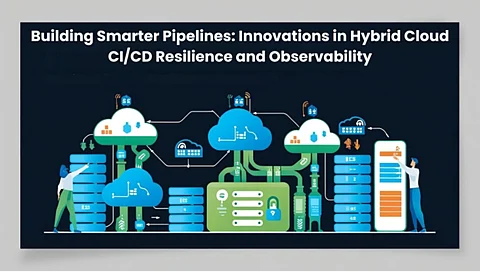

Modern enterprises are reimagining software delivery through hybrid cloud CI/CD platforms that demand both agility and resilience. Jithendra Prasad Reddy Baswareddy, a seasoned technology expert specializing in cloud-native CI/CD platforms and DevOps architecture, presents cutting-edge strategies for modern software delivery infrastructure in this article.
As business units ramp up digital transformation, hybrid cloud Continuous Integration and Continuous Delivery (CI/CD) environments are at the core of realizing scale-out agility. Such hybrid environments combine on-premises with cloud-based resources to ensure optimal performance, flexibility, and security. This hybrid model brings with it a large amount of complexity in infrastructure visibility and operational reliability. It is no longer a choice to overcome these two challenges; it is a strategic necessity for top-performing engineering teams.
Observability has developed from a monitoring checklist item to an architectural pillar of software delivery. Contemporary CI/CD platforms expect insight into infrastructure, but also into the entire software lifecycle. Metrics, logs, and traces are needed, but only when smartly correlated. New implementations now leverage standardized metadata tagging to consolidate telemetry streams, presenting simple end-to-end visibility. This consolidated perspective significantly lowers mean time to resolve (MTTR) and speeds up mean time to detect (MTTD), especially in complicated, multi-region environments.
Companies have evolved away from siloed monitoring tools towards federated, centralized designs. Local collectors pipe telemetry to global analysis layers, realizing consistency among heterogeneous systems. Prometheus, Grafana, and Splunk have become the trio of the revolution. Prometheus is best at lightweight, real-time metric collection; Grafana turns those metrics into actionable visual dashboards; and Splunk is the backbone for log analysis and pattern recognition. Those tools, when tied together through a shared tagging schema, create a strong foundation for proactive monitoring.
Selecting the appropriate tools involves more than comparison of features. Effective organizations use structured assessment frameworks with a focus on scalability, alerting maturity, and team familiarity. Phased adoption, with an initial emphasis on infrastructure and progressing to application monitoring, log collection, and automation, provides long-term value. Teams can choose the flexibility to develop tooling without being bound by inflexible vendor ecosystems.
Scalability is not just about being able to process more jobs; it's about processing them consistently. Horizontal autoscaling and smart job scheduling make CI/CD workloads respond to shifting requirements. During spikes, like product releases or holiday shopping, such trends avoid resource depletion and maintain reliable build and deployment times. The optimal implementations use a combination of baseline reserved capacity and elastic cloud bursts, bringing performance and cost-effectiveness in equal proportion.
Hybrid CI/CD infrastructures must anticipate failure. Resilience is engineered through multi-region architectures, redundant load balancing, and isolated failure domains. Advanced designs go beyond basic redundancy leveraging intelligent traffic routing, persistent connection draining, and application-aware health checks to ensure uptime. This minimizes the blast radius of disruptions and supports seamless recovery, even during large-scale incidents.
Automation is critical in minimizing the amount of human intervention during outages. Advanced CI/CD platforms now incorporate self-healing features such as circuit breakers and automatic rollback mechanisms. Chaos engineering with orchestrated failures inserted into the system to test system behavior is increasingly becoming a practice. The simulations reveal vulnerabilities and confirm recovery processes prior to real-world outages, making operational confidence greater.
The development ecosystems of today require flexibility in languages and frameworks. CI/CD tools are becoming more language- and tool-agnostic through the use of containerization and declarative pipeline definition. The method enables uniform build behavior on a variety of technology stacks with minimal time required for new tool onboarding. Organizations achieve quicker time-to-market and less long-term maintenance overhead.
Configuration as code (CaC) has transcended infrastructure teams and is now part of CI/CD. Version-controlled repositories holding pipeline and environment definitions guarantee repeatable, auditable deployments. When paired with GitOps practices and immutable infrastructure, this trend obliterates configuration drift, improves security, and speeds provisioning. Validation pipelines validate infrastructure updates just like application code, identifying problems before they reach an unwieldy scale.
Organizations that adopt observability and resilience at scale describe dramatic gains. Deployment rates go from weekly to daily, or even several times a day. Failure rates for change decrease due to automation and aggressive testing. Security patches are deployed in hours, not days, leading to improved responsiveness to attacks. Operationally, fewer engineers manage more developers, thanks to efficient governance and tooling.
In summary, the innovations discussed in this article represent the shared development of DevOps practices and infrastructure engineering. As Jithendra Prasad Reddy Baswareddy points out, creating strong and observable hybrid CI/CD platforms is not merely about technology, it's about promoting velocity, stability, and scalability amidst continual change.
